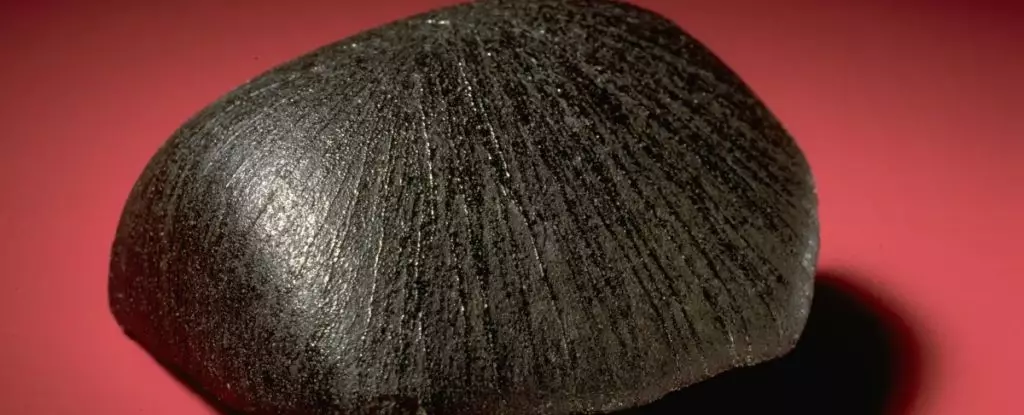Mars, the fourth planet from the Sun, has long fascinated scientists and laypeople alike with its enigmatic landscape and potential for harboring life. For decades, exploratory missions have unveiled evidence suggesting that Mars was once adorned with vast bodies of water—lakes, rivers, and perhaps even oceans. Yet, understanding the timeline of Mars’ water history and its transition to the arid conditions we observe today remains a significant puzzle. Recent studies involving Martian meteorites provide compelling clues, shedding light on a wet Martian past that astronomers are only beginning to understand.
The Lafayette Meteorite: A Window to Mars’ History
One such breakthrough comes from the analysis of the Lafayette Meteorite, a fragment that traces its origins back to Mars, ejected into space around 11 million years ago before landing on Earth. This meteorite has become a focal point for researchers attempting to date when liquid water was present on Mars. Recent studies have identified minerals within the meteorite that formed approximately 742 million years ago under conditions that suggest water was involved in their formation.
Geochemist Marissa Tremblay, affiliated with Purdue University, articulated a significant finding: “We dated these minerals in the Martian meteorite Lafayette and found that they formed 742 million years ago.” This timeline suggests that Mars did not remain perpetually dry. In fact, the liquid water present during this period stemmed from the melting of underground ice, known as permafrost, triggered by volcanic activity.
Understanding the Mechanisms at Play
The formation of specific minerals, such as iddingsite, is crucial in this narrative. Iddingsite, a product of volcanic basalt altered by liquid water, signifies that Mars has experienced dynamic geological processes. The discovery of this mineral within the Lafayette Meteorite serves as a testament to the concept that, while water may not have been abundant at all times, it certainly played a role in the planet’s geological history.
Analyzing the mineralogical content of Meteorites is no small feat. Techniques like radiometric dating enable scientists to classify isotopes of elements such as argon, which emerge through the decay of potassium. This process offers a window into establishing when minerals formed and subsequently interacted with water, thus contributing to our understanding of Mars’ aqueous past.
However, the process of dating Martian minerals poses challenges. The trajectory of a meteorite, including the effects of ejection from Mars, cosmic exposure during its journey, and thermal alterations upon entering Earth’s atmosphere, can all influence the apparent age of the materials. Nevertheless, researchers utilized sophisticated modeling to account for these variables, thereby reinforcing the reliability of their findings.
Tremblay noted, “The [estimated] age could have been affected by the impact that ejected the Lafayette Meteorite from Mars,” and similar factors during its journey. But through careful analysis, the scientists established that the age of the aqueous alteration within the Lafayette Meteorite remained intact and reliable despite these complexities.
The findings from the Lafayette Meteorite not only refine the dating of moisture on Mars but also echo a broader narrative about the planet’s geological history and volcanic activity. This research supports an era of pronounced volcanic activity on Mars, hinting at an unsettled geological past that may still be at play in the present. Insights gleaned from missions like Mars InSight lend credence to these theories, revealing that beneath its seemingly dormant exterior, Mars is still a planet of considerable activity.
Moreover, the implications extend beyond Mars itself. Tremblay emphasized the relevance of these techniques in planetary science, stating, “We have demonstrated a robust way to date alteration minerals in meteorites that can be applied to other meteorites and planetary bodies to understand when liquid water might have been present.” This opens a vista of possibilities for understanding not just Mars, but also the formation of water on Earth and other celestial bodies.
As scientists continue to peel back the layers of Mars’ geological history, meteorites like the Lafayette serve as invaluable time capsules, offering a glimpse into a world where water once flowed. The synergy between advanced dating methods and the intricate study of Martian materials is paving the way for profound revelations about our neighboring planet and, consequently, the dynamics of our own world. With each discovery, we inch closer to deciphering the mysteries of Mars—a planet that, while silent now, still whispers tales of its wetter days. As we articulate these narratives and explore future missions, the hope remains that Mars may yet hold secrets that could affirm or challenge our understanding of where life could have existed beyond Earth.


Leave a Reply